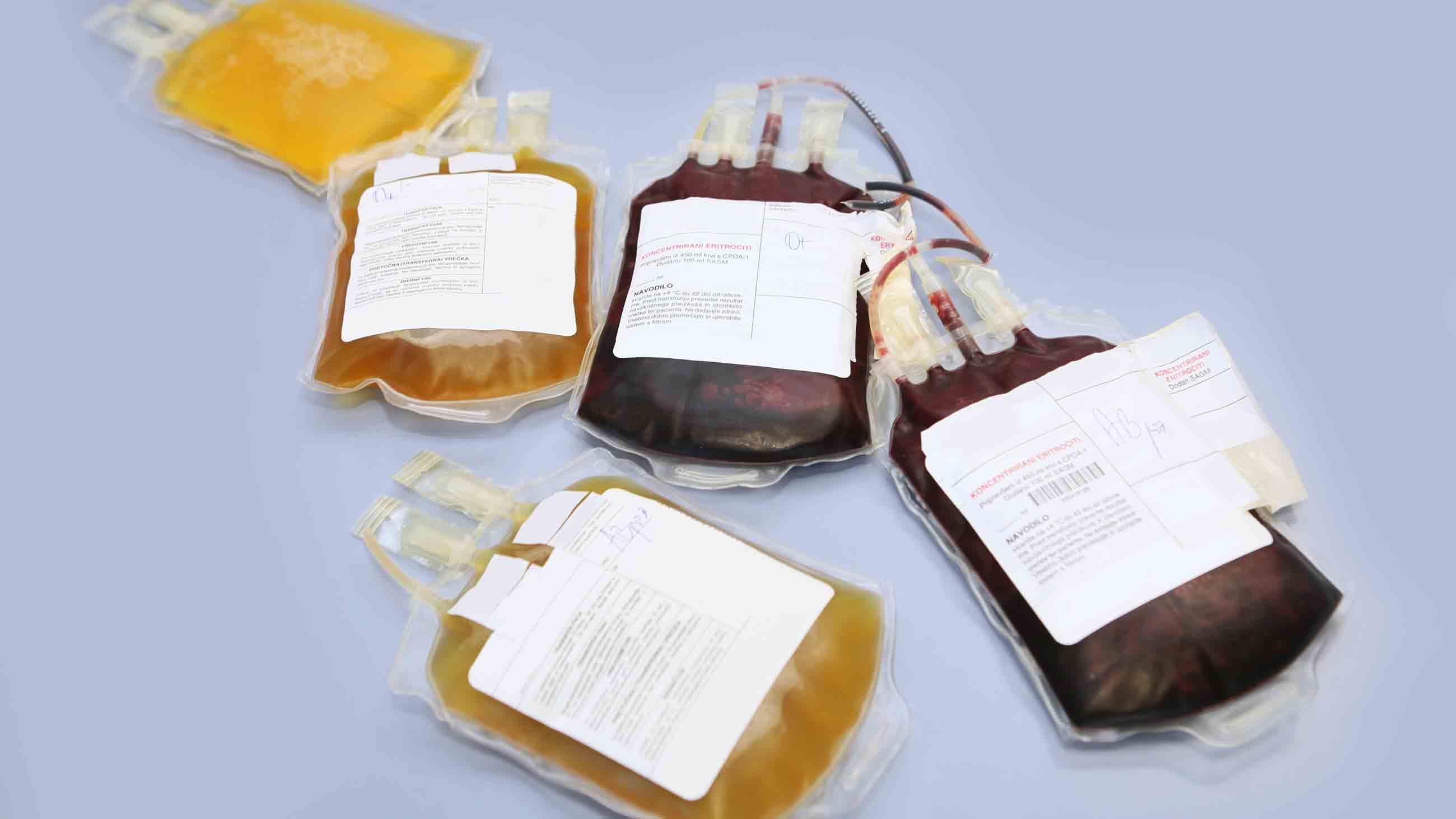Baby boomers looking for the fountain of youth should be skeptical of therapies offering up the blood of young people, a new government advisory suggests.
In response to reports of companies providing infusions of plasma — the liquid component of blood that contains cells and proteins — transferred from young donors to older patients in an effort to combat a variety of aging-related conditions, the U.S. Food and Drug Administration issued a warning Tuesday stating that such procedures have “no proven clinical benefit.”
In a statement, FDA commissioner Scott Gottlieb, along with Peter Marks, director of the agency’s Center for Biologics Evaluation and Research, wrote that while plasma has long been shown to be beneficial in managing “bleeding or clotting abnormalities,” it has not been approved to treat conditions associated with normal aging, nor diseases like Parkinson’s and Alzheimer’s.
In response to the warning, a startup that had been charging customers $8,000 for a liter of plasma updated its website to note that it had ceased treatments. The site had previously stated that research in mice was the “inspiration” for its plasma transfers.
That research, started at Stanford University in the early 2000s, found that by connecting the circulatory system of a young mouse to an older one through a process called parabiosis, aging rodents experienced improved muscle repair and organ cell growth. “It’s not so much about making people live longer,” Dr. Thomas Rando, a professor of neurology at Stanford University School of Medicine, told Wired in 2005. “But if some older person gets a broken bone or skin wound, maybe we could improve their recovery rate. Maybe there’s a chance to enhance the potential of old tissues.”
The researchers cautioned, however, that their results in mice could not simply be applied to humans or to one-time transfusions. And while more targeted research in 2014 into a growth protein known as GDF11 also showed promise when injected into mice on its own, follow-up studies have come up with contradictory results.
Still, the FDA isn’t writing off young blood treatments entirely. Rather, the agency emphasizes that plasma infusions come with risks and urges patients to undergo procedures only if they are part of a legitimate clinical trial.
Dr. Mark Allen, co-founder and CEO of Elevian — a regenerative medicine startup that grew out of the work at Stanford and then Harvard — cautioned the scientific community not to over-hype what the current research supports. “There is something real here,” he told WebMD. “Let’s not do something that ruins the credibility of the science.”
Also in the news:
• In a wide-ranging interview with Science Magazine, President Trump’s newly appointed science adviser, meteorologist Kelvin Droegemeier, held court on topics including climate change, harassment in science, and research funding. The interview was Droegemeier’s first since being sworn in as director of the White House Office of Science and Technology Policy, a position that had sat vacant for Trump’s first two years in office. In the interview, Droegemeier largely echoed familiar White House stances: He hailed the shift from government to private-sector funding of basic research; he balked at proposals to add sexual harassment to the federal government’s definition of scientific misconduct, and he avoided saying whether he believes that greenhouse gas emissions are an existential threat to the planet. “The climate system is a very, very complicated thing,” he said, arguing that we need to understand that complexity but making no call for increased funding of climate science. The next day, Droegemeier ruffled feathers when he concluded a plenary talk at the American Association for the Advancement of Science’s annual meeting without allowing time for the customary Q&A session. “There were audible grumbles,” Chemistry World reported, “when his talk ended abruptly and he was whisked away.” (Science)
• The Australian government officially declared the Bramble Cay melomys, a brown rat-like rodent that lived on a small coral cay in the Great Barrier Reef, extinct earlier this week. The rodent had been widely recognized as the first mammal likely to face extinction due to rising seas associated with human-driven climate change, though lingering numbers found shelter and food in coastal leafy plants. But when ocean levels finally inundated the low-lying cay with salt water, the plants on Bramble Cay began to die, leaving the melomys without adequate resources. In a 2016 report, scientists noted that sea level on the cay was rising an average of a quarter of an inch per year. Fishermen last spotted the Bramble Cay melomys in 2009, and while there is a slim chance that the animals could be surviving on neighboring islands, there have been no further sightings. Queensland Environment Minister Leeanne Enoch told the Sydney Morning Herald that the extinction shows the immediacy of the effects of climate change. “How many more species do we have to lose for the federal government to take action?” she asked. (Washington Post)
• A laboratory in Terni, Italy has released the first genetically-modified mosquitos on a large scale in a high-security testing facility designed to mimic real-world environments. The test mosquitos were altered using gene drive technology, a form of genetic modification that ensures the trait changes will be passed down to nearly all offspring, instead of only half as would happen naturally. Their modifications are intended to prevent the spread of malaria — which kills 400,000 people annually — by removing the females mosquitos’ ability to bite and by rendering them sterile. Scientists hope gene-drive could eventually be used to eliminate other insect-borne diseases, including Zika, but critics fear that genetically-altered organisms — particularly those with modified gene-drives — could have far-reaching, unintended consequences if released into the world. “This is a technology where we don’t know where it’s going to end. We need to stop this right where it is,” says Nnimmo Bassey, director of the Health of Mother Earth Foundation in Nigeria. “They’re trying to use Africa as a big laboratory to test risky technologies.” (NPR)
• The national government of the Philippines reported this week that at least 136 people, mostly children, have died in a rapidly spreading measles outbreak. Measles is considered one of the most infectious viruses and the outbreak has also sickened more than 8,400 people. President Rodrigo Duterte blamed low vaccination rates for the spreading disease and has ordered immunization clinics around the country. At the same time, Japan recently reported a smaller outbreak of some 167 cases, describing it as the worst measles event in more than a decade. The Japanese outbreak centered on members of a religious group that promotes alternative healing and has opposed vaccination. But the group’s leaders announced Thursday that they would now encourage inoculation in order to protect their members and those in the surrounding community. (Associated Press, The New York Times).
• It’s textbook science: DNA is made up of four bases, A, T, G, and C, which in turn create endless combinations of genetic code. Last week, chemist Steven A. Benner and a team of researchers published a paper in Science announcing a modified genetic alphabet. This new genetic code, named Hachimoji DNA (“hachi” means eight and “moji” means letter in Japanese), contains four new bases that do not exist in nature and were instead synthesized in the lab. Certain enzymes can read and create molecules using these synthetic building blocks, just as they would with normal DNA bases. In the future, synthetic DNA could become a reliable way to store our digital data; unlike a silicon chip that degrades after a decade or so, DNA may last for centuries. Plus, having twice the amount of base pairs could increase the amount of information encoded in a given strand of DNA. Science journalist Carl Zimmer calls Benner’s preliminary work a “chemical tour-de-force.” (The New York Times)
• And finally, the 70th annual George Polk Journalism Awards were issued this week, and the prize for Environmental Reporting went to … Undark. Photojournalist Larry C. Price and contributing Undark reporters received the award for their work on a multipart, multinational, and multimedia exposé on the global impacts of fine particulate air pollution, called Breathtaking. Such pollution is a public health menace, directly claiming as many as 4 million lives annually, according to recently compiled global morbidity data. Issued by Long Island University in memory of a respected CBS correspondent who was murdered in 1948 while covering the Greek Civil War, the Polk Awards are considered to be among the most prestigious in journalism, and we are proud to have been honored among other notable recipients this year, including The New York Times, The Washington Post, The New Yorker, and ProPublica. “It’s distressing and depressing,” Price said in response to the award, “to witness the global suffering this issue causes.” (Polk Awards, Undark)










